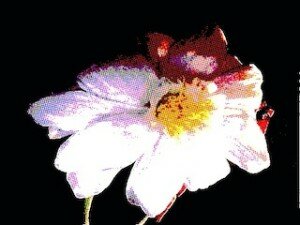The History of Meditation: Part 5 by Orna Ross
Taoism
Religious Taoism is concerned with the pursuit of immortality and acquisition of magical powers but philosophical Taoism is a mystical set of teaching, best represented by Lao-tzu (The Old Master) legendary author of Tao Te Ching and his follower Chuang-tzu, who together are said to be the founders of this belief system.
Little is known of the life of Lao-tzu , or even if he actually existed. He was believed to have been a contemporary of Confucius, in the sixth century BCE, but scholars have since dated his work to the third or fourth century BCE. According to legend, he was custodian of the Imperial archives and lived his life in accordance with the Tao and Te (the supreme way and its expression). The defeat of his emperor meant he had to leave court and travelling west he came to a mountain pass, where he was stopped by the Guardian of the Pass.
On realising who he was, the Guardian asked him Lao-tzu to write a book of enlightenment for him in order to be allowed to pass through the gate. Lao-tzu, in response and in a single sitting, composed the Tao Te Ching, whereupon the gate was opened for him and he passed through and was never heard of again.
The story of its origins reflects the spirit of the book. The Tao is the way and allows us to pass through the gate but the Tao is beyond description and Lao-tzu emphasises that he only calls it this because he has to put a word on it. In the very first lines he insists:
The Tao that can be told
Is not the eternal Tao.
The name that can be named
Is not the eternal Name.
The unnameable is the eternally real.
Naming is the origin
Of all particular things.
Unlike zen, Tao meditation has no rules about what should or should not be done during a session or how to do it. Rather Tao is defined by the application of the principle of rigorously doing nothing. This is the wuwei-principle, wuwei being the complete absence of intentional action in rigorous stillness. This opens a space through which “nature”, or “the universe” or what we are calling in this book “creative consciousness” can freely and spontaneously unfold).
This is a process familiar to all writers and artists, the sensation of a creative force moving through them and their work flowing of its own accord. Within the Tao are the two polarities it calls yin and yang. Yin, the feminine principle is passive, receptive, dark and soft while yang, the masculine principle, is active, dynamic, light and hard. The intermingling of these complementary principles gives rise to the world in a cycle of flowing into being and ebbing away. All things exist because their opposite exists.
The yin-yang symbol expresses the creative impulse of the universe — a circle for ultimate reality divided into black and white, each containing a smaller circle of the other. Their interaction is one of continual change and transition and the balance between them is the Tao. This creation symbol is often used for Tao meditation.
Although there are no rules, typically Tao meditation is performed in a relaxed, quiet standing position, similar to the tadasana (mountain) pose in yoga.
Next week: Ancient Greece & Rome
























